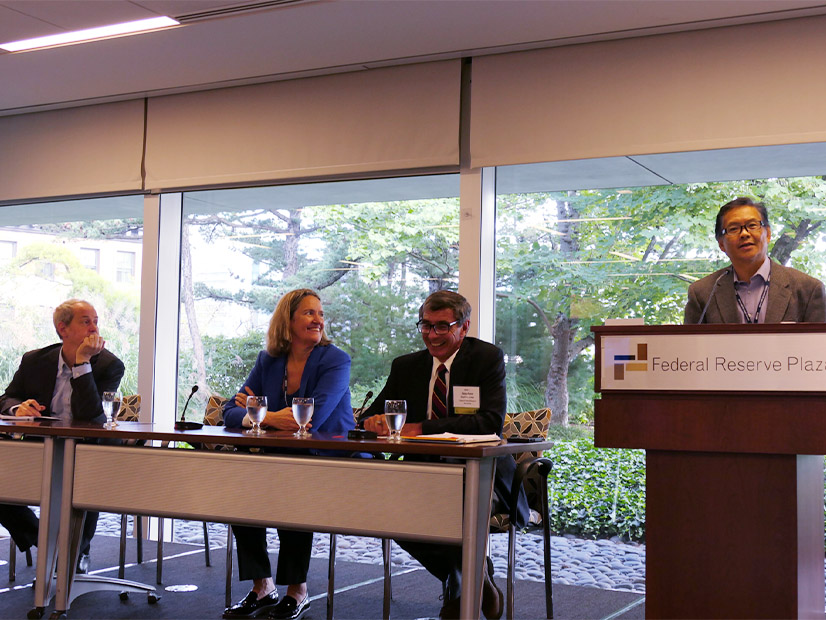CAISO on Sept. 26 passed two separate initiatives: one that removes penalties for certain meter data issues, and another that expands bilateral trading in the Western Energy Imbalance Market (WEIM) and Extended Day-Ahead Market (EDAM).
The first proposal deals with small meter data reporting inaccuracies that the ISO pointed out could be prompting unnecessary penalties. Those inaccuracies, despite being small, trigger full investigations but have minimal impact on settlement outcomes, Becky Robinson, CAISO director of market policy development, told the ISO’s Board of Governors and Western Energy Markets Governing Body at their joint meeting.
The proposal also aims to address the concern that scheduling coordinators (SCs) may lack sufficient incentive to submit demand response baseline data, as well as identify certain requirements that pose an unnecessary administrative burden to SCs and the ISO.
Kathy Anderson, senior manager of transmission and markets at Idaho Power, presented an example of a meter data error the utility experienced to help demonstrate the issue to the board and Governing Body.
When Idaho Power joined the WEIM in 2018, the metering for a 19.5-MW resource inadvertently was set up incorrectly in the system, Anderson explained.
“At the time, we didn’t realize that the generator meter was actually already compensated for line losses, so we programmed the line losses into our energy accounting system,” Anderson said. “This resulted in subtracting more losses than we should have for the actual generator value.”
The magnitude of the issue was relatively small, calculating out to an hourly average error of about 0.37 MW, and was fixed after Idaho Power discovered it. However, because of the tariff violation, the utility was fined $639,000.
“We felt this was excessive, given the magnitude of the inadvertent error, so we filed at FERC to have the penalty waived, and FERC did approve that penalty waiver request,” Anderson said (EL23-94). (See FERC Waives Nearly $2M in CAISO Data Reporting Penalties.)
Following the incident, Idaho Power expressed to CAISO that it felt the tariff had a “disproportionate penalty design.” To address the issue, the utility proposed establishing a materiality threshold for incorrect meter data penalties, where inaccuracies less than 3% or 3 MWh won’t be penalized.
“We feel comfortable with this change, because we feel that small meter data corrections really don’t rise to the level of warranting a penalty or the need for a costly investigation, which is a time-consuming process for both staff and the market participant,” Robinson said.
The proposal also recommends establishing due dates and new penalties to incentivize timely DR monitoring data submittal.
“The Department of Market Monitoring has observed some significant and ongoing problems with timely monitoring data submittal, given the lack of well-defined deadlines,” Robinson said.
Finally, to ease administrative burden, the proposal introduces a 30-day period where the ISO waits to assess penalties and streamlines the investigation process.
Robinson indicated that there was broad stakeholder support for the proposal, and the board and Governing Body voted to pass it unanimously.
Inter-SC Trades
The board and Governing Body also unanimously passed a proposal to streamline and expand inter-scheduling coordinator trading to the WEIM and EDAM.
The initiative was first introduced in August and moved through the stakeholder process expeditiously. (See CAISO Kicks Off New Initiative to Streamline Bilateral Trading.)
Inter-SC trading is an optional market feature that facilitates settlement of bilateral contracts between SCs. It was already used in the ISO’s balancing authority area, but not in the WEIM or EDAM.
WEIM and potential EDAM participants indicated to the ISO that expanding inter-SC trading “would be a beneficial service to their participation in the regional markets,” Robinson said, and that establishing it would not impose any costly barriers to EDAM implementation in 2026. Stakeholders also expressed that extension of inter-SC trading could support diverse business needs and market participation structures, and help further integrate bilateral markets in the West.
“It provides additional optionality and value to those market participants in the EIM and the EDAM and … it’s something we can implement and integrate with the EDAM implementation efforts,” said Milos Bosanac, CAISO regional markets sector manager.
The proposal also passed unanimously, with broad stakeholder support.
A ‘Distinct Disadvantage’
Members for the West-Wide Governance Pathways Initiative’s Launch Committee also presented the “Step 2” proposal, which was released Sept. 26. (See related story, Pathways Initiative Releases ‘Step 2’ Proposal for Western ‘RO’.)
Step 2, part of the “stepwise” approach to regionalization in the West, would transfer governance authority over existing energy markets from CAISO to a new regional organization (RO).
The proposal seeks to implement “Option 2.0,” which would give the RO full governance authority over the WEIM and EDAM under a single integrated tariff, though an “Option 2.5” also was considered, which would separate the RO tariff from the ISO’s.
While the proposal received general support, some board members felt the presentation was premature.
“We are at a distinct disadvantage that the 128 pages that you released today, we have not been able to read,” board member Mary Leslie said. (The document actually is 133 pages.) “I wish that this were reverse order — that we would have been allowed to read this and then have you here.
“We are very pro creating a Western energy market, but you can understand our situation as board members, that we have a fiduciary responsibility in California and to the CAISO.”
Launch Committee co-Chair Pam Sporborg, of Portland General Electric, reiterated that the process still is underway.
“I think you guys are used to seeing final proposals that are up for a vote, and this is not a final proposal,” Sporborg said. “We are here to offer an overview of our 133-page document and hopefully give you enough grounding to be able to parse through that and bring us your feedback.”
The final proposal is expected in mid-November.
